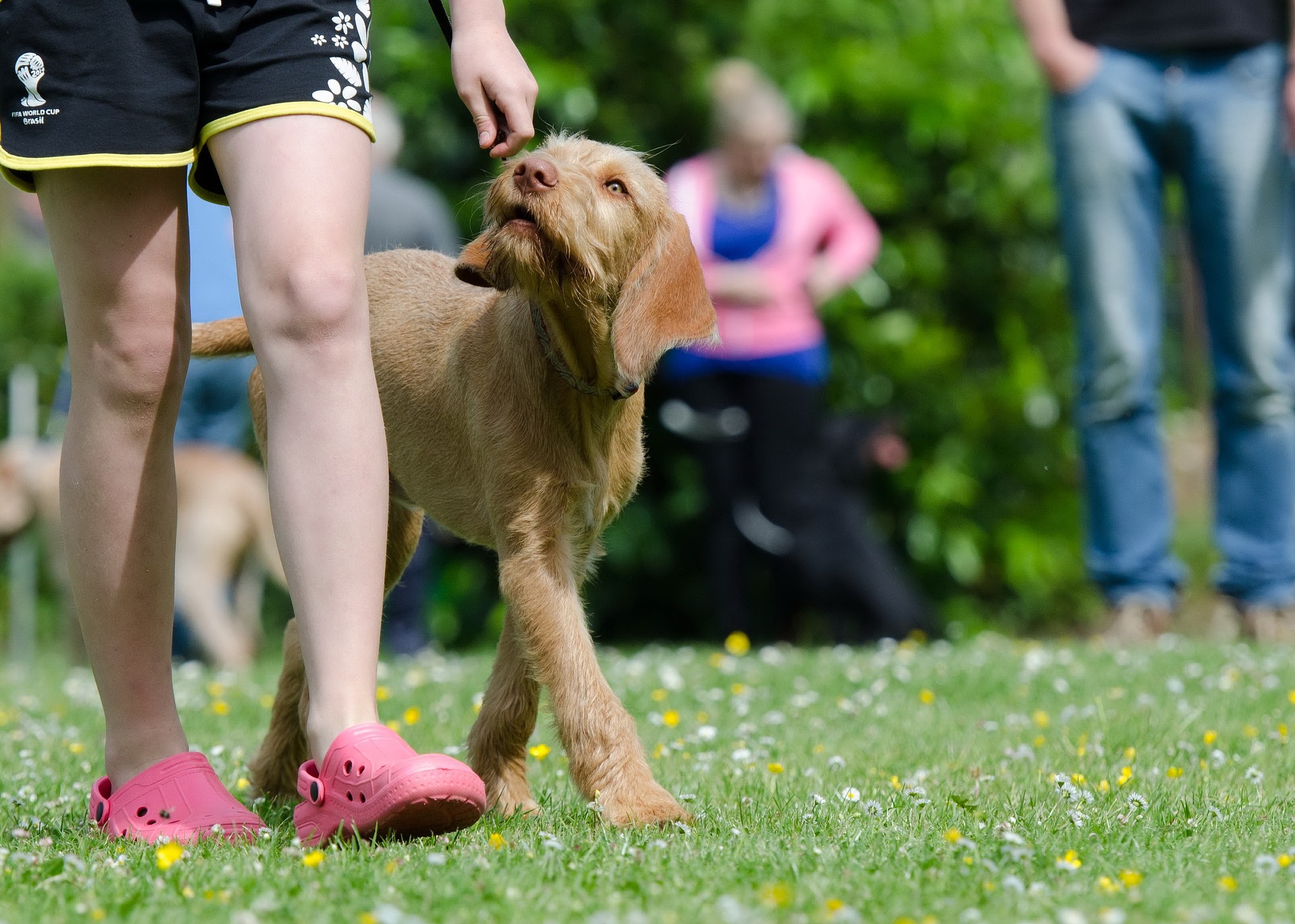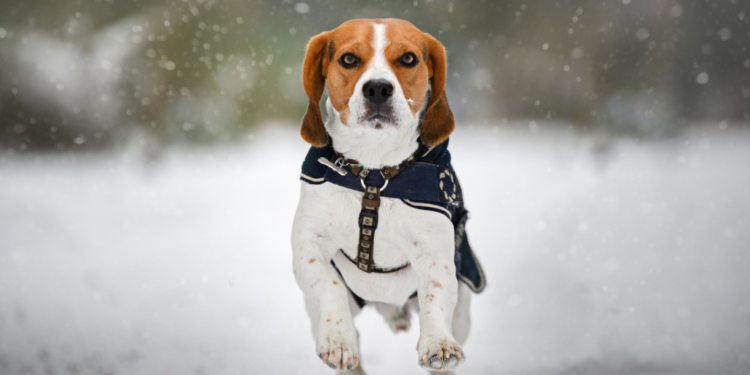Introduction:
Training your dog to wear a pet harness can be very helpful in keeping them safe and secure. By using a harness, you can help your dog learn how to behave properly while being walked or taken on a walk. You can also use a harness to help control your dog when they are running away or trying to pull you down a hill. There are many types of harnesses and other accessories available on https://furryluxe.store/pet-apparel/, so find one that is comfortable for both you and your dog.
Benefits of training your dog to wear a pet harness
Firstly, training your dog to wear a pet harness can greatly improve its safety during walks. Harnesses distribute pressure more evenly across the dog’s body and prevent choking or injury to the neck. This is especially important for small dogs or those with respiratory issues.
Secondly, wearing a harness can make your dog feel more secure and comfortable during walks. Unlike collars, which can restrict movement and cause discomfort, harnesses allow for greater freedom of movement while still keeping your dog securely attached to its leash. This can lead to better behaviour on walks and reduce pulling, jumping or other unwanted behaviours.
Lastly, training your dog to wear a pet harness also provides an opportunity for bonding between you and your furry friend. Consistent positive reinforcement training techniques will not only help them get used to wearing the harness but also create trust between you both while they learn new skills. Overall, investing time in properly training your dog to wear a pet harness can result in safer and happier walks for you both!
Train your dog:
First and foremost, it is important to choose the right pet harness for your dog. Make sure that you select a harness that fits well and is comfortable for your furry friend. A poorly fitting or uncomfortable harness can cause discomfort or even injury to your pet.
Once you have selected the right harness, introduce it to your dog gradually. Start by letting them sniff and investigate the harness without actually putting it on them. This will help them become familiar with the new object.
Next, place the harness over their head and gently fasten it around their body. Reward them with a treat or praise when they tolerate wearing it for short periods of time.
Gradually increase the amount of time they wear the harness each day until they are comfortable wearing it for longer periods of time. Remember to always provide positive reinforcement when training your dog as this will encourage good behaviour in future.
By following these simple steps, you can train your pup to wear a pet harness with ease!
Tips for successful training
One of the most crucial aspects of training your dog to wear a pet harness is patience. You should start by introducing the harness slowly and letting your dog get used to it in short intervals. Gradually increase the time for which you keep the harness on the dog until they become comfortable wearing it for long periods.
Another key aspect is positive reinforcement. Whenever your dog puts on their harness without any issues, reward them with treats or praise to encourage good behaviour. This will help create a positive association with wearing the harness and make it more likely that they will comply in future.
Finally, consistency is essential when training your dog to wear a pet harness. Avoid switching between different types or styles of harnesses as this can confuse or frustrate your furry friend. Instead, choose a suitable type of pet harness for your specific breed and stick with it throughout their training journey.

Preparation
Day 1:
The first step in training your dog to wear a pet harness is introducing them to it. Allow them to explore the harness and get used to its presence. Start by placing the harness on the ground and letting your dog sniff it out. Encourage them with treats and praise if they show any interest in the harness.
Once your dog seems curious about the harness, you can begin putting it on them. Begin by holding the straps over their back and gently sliding each leg through. Once all four legs are through, fasten the clips together at their belly. Be sure not to make the fit too tight or too loose – you should be able to fit two fingers between your dog’s skin and the harness.
It’s important not to rush this process as some dogs may take longer than others to feel comfortable wearing a pet harness. Take things slow and always reward good behaviour with plenty of treats and positive reinforcement!
Day 2:
On the second day of training your dog to wear a pet harness, it’s time to start walking with the harness on. Make sure you have properly fitted the harness and that it is snug but not too tight. Begin by having your dog wear the harness for a few minutes inside your home, allowing them to get comfortable with it before heading outside.
Once you’re ready to go outside, attach a leash to the harness and begin walking with your dog. Keep treats handy and reward them when they stay in the harness and walk calmly beside you. If they try to pull or resist wearing the harness, stop walking and wait until they calm down before continuing.
Remember that patience is key when training your dog to wear a pet harness. Some dogs may take longer than others to adjust, so be consistent with your training routine and keep rewarding good behavior. With time and practice, wearing a pet harness will become second nature for your furry friend!
Day 3:
As you gradually increase the time your dog spends wearing the harness, it is important to reward them for staying in it every few minutes. This positive reinforcement will help your dog associate wearing the harness with a positive experience and make training easier. Treats or praise can be used as rewards.
It’s also important to keep an eye on your dog during this process. If they appear uncomfortable or agitated, take the harness off immediately and try again later for a shorter period of time. You don’t want to push your dog too far too quickly as this may cause anxiety or fear towards the harness.
Remember to stay patient and consistent with your training. Every dog is different, so some may take longer than others to get comfortable with wearing a harness. Keep practising for short periods of time each day until you notice that your furry friend has adjusted comfortably to their new accessory!
Day 4:
When training your dog to wear a pet harness, it is important to leave the harness on during meals and other activities. This will help your dog get used to the sensation of wearing the harness for extended periods of time. Additionally, keeping the harness on during mealtime can prevent your dog from gobbling up its food too quickly.
It’s important to note that leaving a harness on for extended periods of time should only be done with supervision. You don’t want your dog getting tangled up or caught on anything while they’re wearing it. Make sure you check in on them frequently and ensure that they’re comfortable.
Overall, this technique can be an effective way to train your dog to wear a pet harness without causing them discomfort or anxiety. By gradually increasing the amount of time that they wear it each day, you’ll help them adjust to this new piece of equipment and make walks much more enjoyable for both you and your furry companion.
Day 5:
Once your dog has become comfortable wearing the harness, it’s time to introduce the leash. Start by attaching the leash to the harness and allow them to drag it around for a few minutes under your supervision. This will help them get used to the sensation of having something attached to their body.
When you’re ready, hold onto the leash and begin walking alongside your dog. Keep in mind that they may not understand what’s expected of them at first, so take it slow and be patient. Use positive reinforcement such as treats or verbal praise when they behave properly.
If your dog starts pulling or behaving erratically while on the leash, stop immediately and try again later. It’s important not to force your dog into wearing a harness or using a leash if they are not ready as this may cause anxiety or stress.
Remember that training takes time and consistency is key. With patience, positive reinforcement, and practice, you’ll have a well-trained pup who feels comfortable wearing a pet harness in no time!












